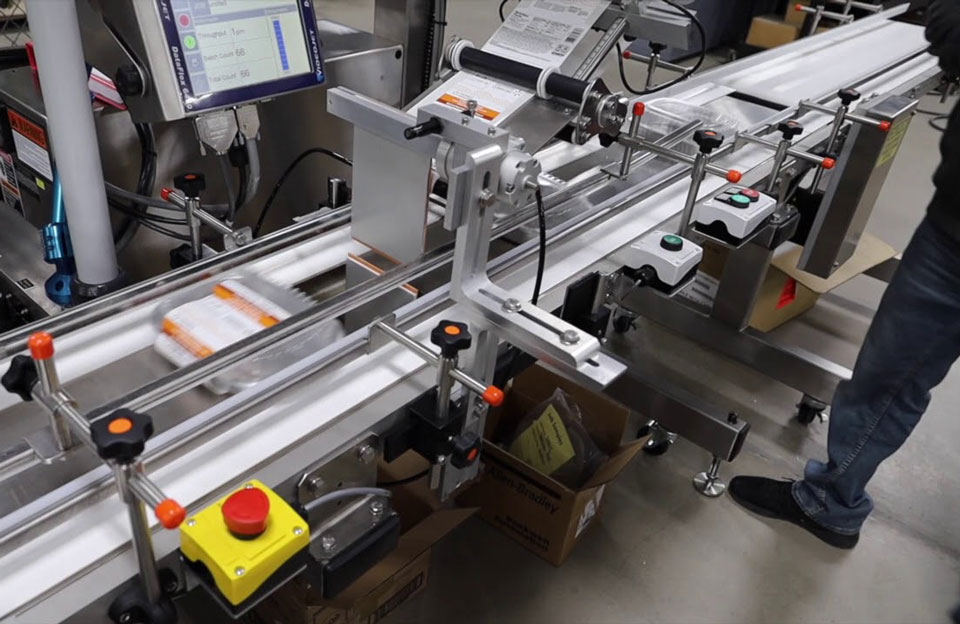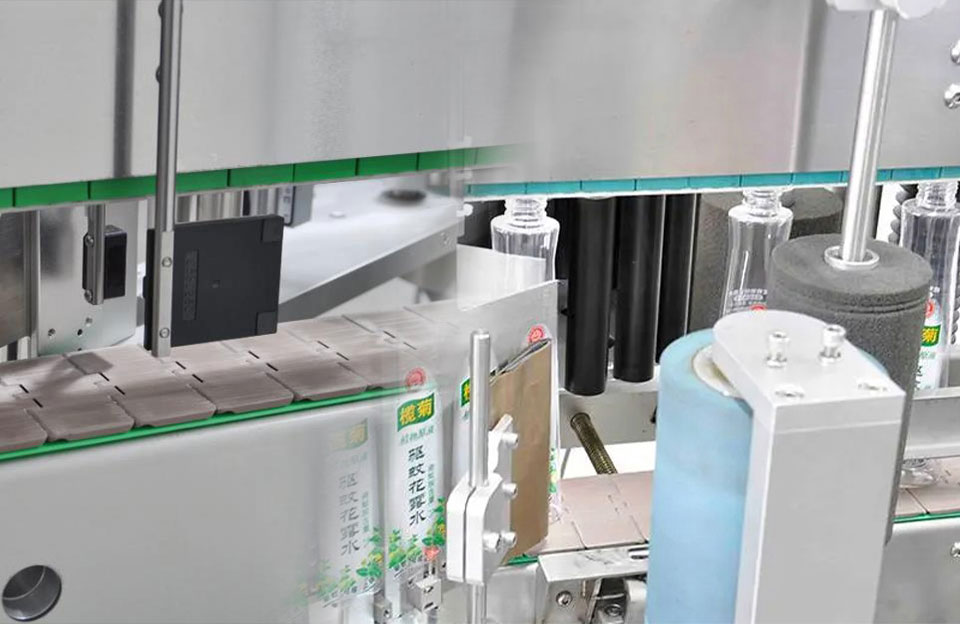The high-speed clamshell labeling machine is a self-contained, flexible, continuous-motion machine designed to apply labels to clamshells or trays and rearrange them for dispensing with tray counting capabilities. Nowadays, clamshell labeling machines have been widely used in packaging various products, but attention should be paid to the environmental impact of clamshell labeling machines while using them.
Packaging Materials for Clamshell Labeling Machines

Packaging materials suitable for clamshell labeling machines should be compatible with the labeling process and provide a safe, durable, and visually appealing label surface. The packaging material must adhere to the label properly and ensure that the label remains intact throughout the product’s life.
- Polyethylene Terephthalate (PET) Clamshell Packaging: PET is a popular material for clamshell packaging due to its clarity, rigidity, and resistance to moisture and impact. The PET flap provides excellent internal product visibility and creates a visually appealing labeling package.
- Polyvinyl Chloride (PVC) Clamshells: PVC clamshells are clear and known for their durability and ability to securely hold labels.
- Polypropylene (PP) Clamshell: PP clamshell has good rigidity and moisture resistance, is usually used in food and retail packaging, and works well with clamshell labeling machines.
- Thermoformed Plastics: Thermoformed plastic materials are heat-resistant and have excellent clarity to display products through labels, such as APET (amorphous polyethylene terephthalate) and CPET (crystalline polyethylene terephthalate) for clamshell packaging.
- Biodegradable or Compostable Materials: For environmentally conscious brands, biodegradable or compostable materials, such as PLA (polylactic acid), can be used in clamshell packaging. These materials are environmentally friendly and can be used with certain labeling machines.
- Cardboard Flap: Some clamshell packages are made of paper or cardboard material, can be labeled with appropriate adhesive labels or tags, and are often used for smaller, lightweight products.
- Blister Cards: Blister cards combine a plastic blister with a cardboard backing. The blister holds the product, and the cardboard backing provides space for the label information, which can be marked with the appropriate label adhesive.
Environmental Impact of Clamshell Labeling Machines

The environmental impact of clamshell labeling machines can be assessed based on several factors related to their production, use, and end-of-life.
- Energy and Resource Consumption: The manufacture of clamshell labeling machine involves using raw materials, energy, and resources. Resource extraction and energy consumption during manufacturing may have an environmental impact depending on the production process and materials used.
- Packaging Material: A clamshell labeling machine is used to apply labels to clamshell packaging, which usually consists of plastic materials such as PET, PVC, or PP. Plastics come from fossil fuels and can have serious environmental consequences, including greenhouse gas emissions and pollution, especially if they end up in landfill or as trash.
- Label Waste: Some label waste can occur during the labeling process, especially during setup and changeover. Waste can cause overall waste generation and disposal challenges due to the different labels used.
- Label Adhesives: The adhesives used in labels can affect the recyclability and compostability of labeled clamshell packaging. Some adhesives may hinder recycling efforts or contaminate recycling streams.
- Energy Consumption During Labeling: When using a clamshell labeling machine, energy consumption during the operation phase should be considered. Electricity use and associated carbon emissions can add to its environmental footprint.
- Recycling and Disposal: End-of-life management of clamshell packaging and labels is critical to their environmental impact. If clamshell packaging and labels are not recycled or disposed of properly, they can contribute to environmental plastic pollution.
Conclusion
Product characteristics, storage conditions, and label adhesion requirements must be considered when selecting packaging materials for clamshell labeling machines. It is also recommended to test the compatibility of the labeling machine with the chosen packaging material to ensure smooth label application and overall packaging integrity. Also, brands should consider any industry regulations or specific packaging requirements about their product type when selecting packaging materials suitable for clamshell labels.When using clamshell labeling machines, the environmental impact of clamshell labeling machines should be paied attention to.


